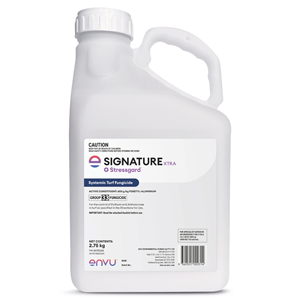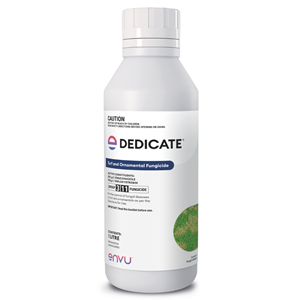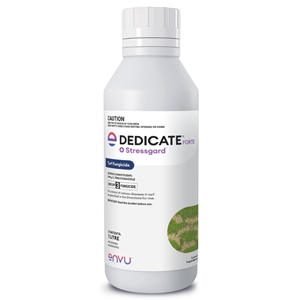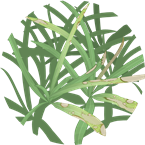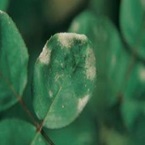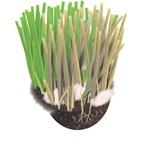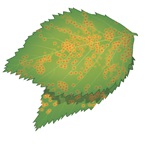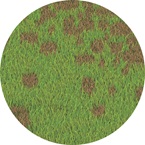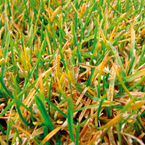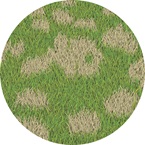- Latin Name
- Description
Anthracnose is a selection of fungal diseases that either attacks the roots or the foliage. It is particularly invasive in warm, humid environments. The diseases generally follow a similar symptom pattern.
Basel Rot is where the disease affects crown and root tissue, whereas, the key disease affecting the leaves is foliage blight.
Anthracnose Symptoms – What are they?
Generally, during warm and humid weather when the turf canopy is wet, leaves of infected plants turn yellow and finally light tan to brown and then die. Younger leaves can often turn red.
Affected plants are easy to pull out. The disease kills plants in irregular shaped patterns. The overall colour of affected patches is reddish brown turning yellow then tan to brown.
There is often a black stain at the base of the plant. This is caused by acervulus, which are involved in pathogen reproduction.
Where will you find Anthracnose?
Poa annua is most susceptible; however, it has been noted on most major turf grass species throughout the world.
Turf is most susceptible when under stress.
When does Anthracnose occur?
It is necessary for a film of moisture to be present on either the roots or foliage for infection. Therefore, periods of high humidity or excess water in the turf canopy favour development.
Foliar Blight: Is more common during warmer temperatures and can be mistaken for droughtBasal rot: Is often a symptom of anthracnose during cool wet periods.
Extremes of temperature that stress turf also aid development. However, a hot summer in a cool temperate area is when the disease is most noticeable.
What damage or effects will Anthracnose have?
Playing turf is compromised and the quality of the turf is reduced, which sometimes impacts on play. In extreme cases, you can expect a loss of turf cover. Plants can wilt, wither and die.
Disease Control in turf - Anthracnose disease (Colletotrichum graminicola) - how to eliminate anthracnose disease from golf and bowling greens, particularly in bentgrass, couch and Poa annua in Australia.
Envu recommends treatment of Anthracnose with Dedicate Turf Fungicide.

